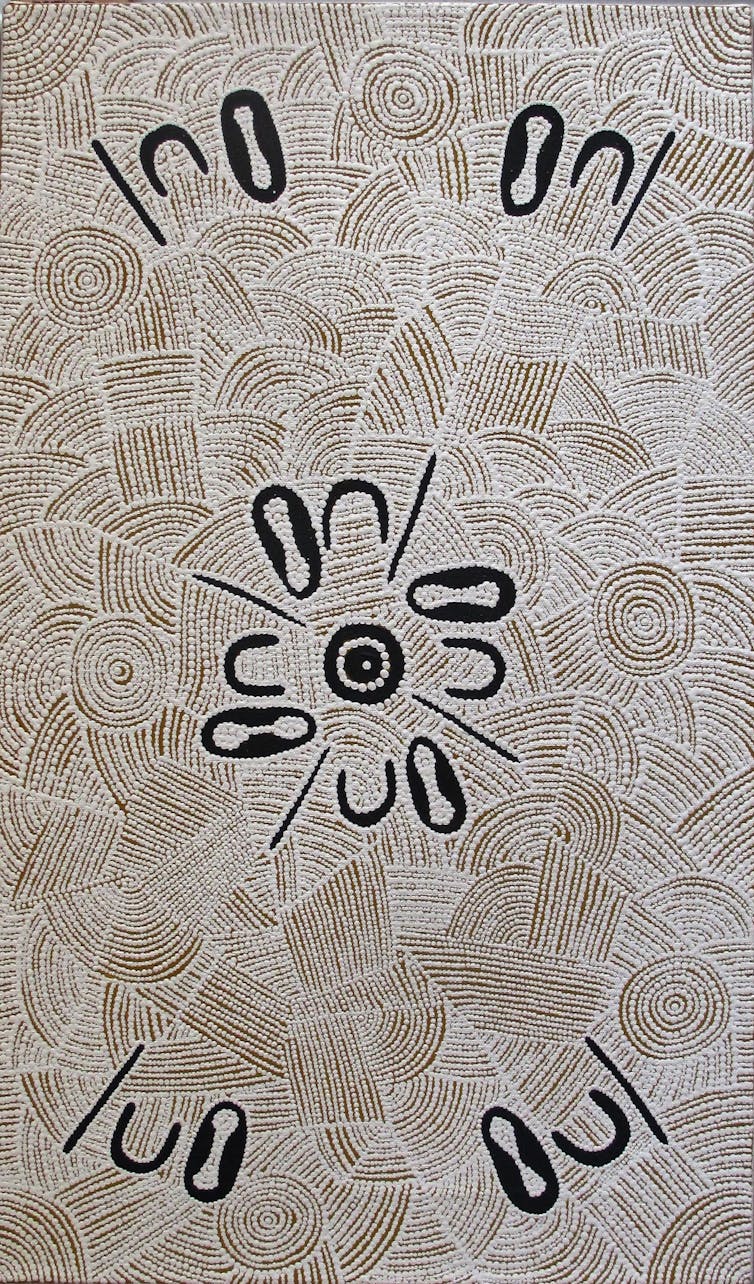Bread from Fire Island Rustic Bakeshop, Anchorage [TWC]
Bunya cone ready to harvest (Queensland).
Before Aboriginals set foot in Australia, dinosaurs ate bunya nuts. For millions of years after that, other animals feasted on them. When the Aboriginals arrived 50,000 or so years ago, they began to grind bunya nuts into flour, mix the flour with water, and bake the flattened dough in hot coals.
Aboriginal clans and tribes traveled hundreds of miles to harvest and share bunya nuts, sometimes from trees that belonged to a single family and were passed from father to son. The last of the traditional festivals happened in 1902 (some sources say 1887). Much of the history may come from a colonist's account published in 1904 of her father's acquaintance with Aboriginals in Queensland during the middle 1800s. Families revived the traditional feasts in 2007. Today, bunya flour appears in breads, gnocchi, and pancakes, among other dishes.
Recent discoveries of grindstones suggest that the Australian Aboriginal peoples made bread 50,000 years ago, and not just from bunya nuts. Most of the Aboriginal breads were made from grains (i.e., grass seeds), and from smaller seeds or roots and tubers of other plants.
Aboriginal grindstone image, Australian Museum (Stuart Humphries)
Crested pigeon, Sydney, Australia [TWC]
Or was it people in Mozambique who invented bread 100,000 years ago? Starch grains on stone tools found in caves there suggests that their inhabitants were grinding sorghum and other grass seeds around 105,000 years ago. Skeptics contend that the other technologies needed to harvest seeds and turn them into digestible food did not yet exist, so it is unlikely that people were eating the sorghum. Our present knowledge can't settle the question one way or the other.
Other gndstones with starch seeds (oats, and other grains) date from about 36,000 years ago. Stones found in Italy, Russia, and the Czech Republic from 33,000 to 30,000 years ago also demonstrate that people were grinding seeds in many places, and that bread itself is much older than agriculture.
We may not have a definitive answer in our lifetimes, but we do know that grinding seeds, nuts, and roots releases much more nourishment than eating them whole. Mixing the dry flour or paste with water makes the seeds even more edible, and flattening the ball of dough to a thin disk allows it to bake all of the way through in the ashes, maximizing the usefulness and tastiness. People have done this for tens of thousands of years.
There might be connections among all of these stories. How did Ngurlu's people get to Australia? At the present, it looks as if modern humans, Homo sapiens, began to migrate out of Africa about 70,000 years ago. This lends more credence to the possibility that the people who were grinding seeds in Mozambique 100,000 years ago took their technologies with them when they left home. Australian Aboriginals, who are more closely related to Africans than to Asians or Europeans, probably migrated through Asia soon after leaving Africa -- perhaps discovering seeds and roots to grind for bread along the way.
The small group of people who arrived in northern Australia moved south over the next thousand years, setting fires to burn the forests and make the land and plants more habitable for themselves. The change in landscape, and hunting by the new occupants drove giant mammals like huge wombats and marsupial lions, to extinction. The fires changed the landscape from forests that thrived in the low-water environment to desert throughout most of the interior. Some of the remaining plants, including spinifex, millet, and kangaroo grass, provided seeds for making bread.
"Seed Dreaming," painting by Angela Nangala Parlinjirri




No comments:
Post a Comment